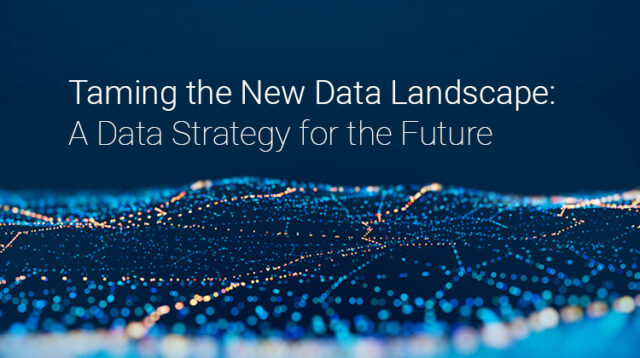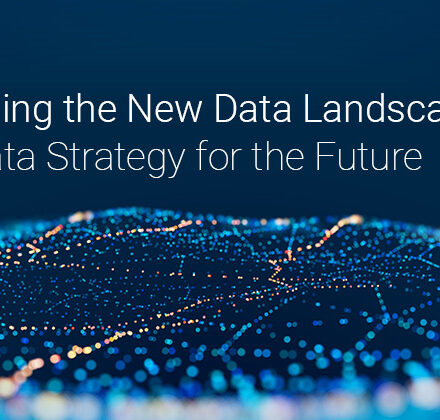Today, many organizations face an ever-expanding amount of data hosted in many locations across their businesses, groups and operations. Dell Technologies faces the same challenge. While there is no question that such data is tremendously valuable to companies, it can be extremely complex to maximize that data value.
In Dell’s case, more than 1,500 data scientists across the company spend up to 60 percent of their time accessing, validating and preparing data before building and training models to unlock valuable business insights.
To get the most out of our data, Dell has invested in an ongoing effort to create a companywide data strategy. The goal is simple: How do we enable more people to get the value out of the data in a secure way?
The answer is far from simple. There are many data owners, users, storage platforms, applications, data governance rules and more involved.
While weaving those variables into a single data fabric is challenging, I am convinced that we need to radically change the way we manage our data in the future. It is becoming so vast that human efforts alone will not keep up going forward and we will miss out on leveraging its value.
Not only do we need to stabilize and secure our data ecosystem, we also need to manage the rising volume and flow of data from our increasingly connected world.
Here’s a look into our efforts so far to transform the way we store, catalog, share, process and protect our data for the future.
Getting Aligned
As an organization with a strong history of high-tech product manufacturing at its core, Dell has tended to see things through a product lens as component parts. As a result, we’ve developed multiple platforms, applications and capabilities, built for purpose but functionally specific. Various business segments and functions have forged their own data strategies—sales, services, marketing, etc.—but there was no enterprise-wide data strategy…until now.
A central goal is to create an enterprise-wide data strategy that meets the needs of everyone but still maintains the strengths of each functional area.
Earlier this year, we formed a global team of roughly 25 members—covering data architecture, data governance, data security, data privacy and overall data management—to tackle the task of creating an enterprise data strategy.
To develop our approach, Dell Digital, our IT organization, closely partnered with the business, specifically our Chief Customer Office and key data consumers.
The team began by interviewing dozens of key players across the company to understand what problems they had and what outcomes they needed. The goal was to identify common themes and pain points to help us established critical priorities. We also did an assessment of the Dell data landscape across technology, process, people and data. Key takeaways from our interviews include:
- Privacy and security are critical
- Governance needs to improve
- Data silos should be merged or connected
- Our complex ecosystem requires a nimble platform
- Time to value has to transform for scale and speed
- Funding model doesn’t work for foundational investment
- Digital talent is hard to acquire, retain and develop
In evaluating our data landscape, we found that we have 2,700 data sources, seven data platforms including multiple versions of the same platform, 160 petabytes of storage, and 50,000 data platform users. We transform our data 120,000 times a day.
Armed with this information, we forged a vision—to protect and maximize the potential of Dell data to power our progress. We created five key focal points, the 5Ss, to guide our data strategy and enablement:
- Secure privacy of customer, employee and company data to build trust and protect our competitive advantage
- Stabilize business continuity and delivery of business strategy and reliable, persistent and robust data solutions.
- Seamless simple, relevant, connected, clean data to enhance ease of use in business intelligence, data science and automation.
- Scale elastic, efficient data solutions that meet the current and future business needs in a timely and competitive manner.
- Speed designed into data ecosystem to accelerate time-to-value and deliver real-time/near real-time personalization at scale.
From there, we established workstreams focused on the most critical requirements, including security and privacy, data landscape, data governance and data platforms. Over the past few months, the workstreams have been refining those needs, assessing functional areas, and analyzing platform options.
The Data Strategy Team meets regularly with key players to review workstream progress, align data strategy to business outcomes and decide priorities going forward.
Exploring a Disruptive Path
Our data strategy mission is two-fold. IT is a game of two halves. One half, defense. One half, offense.
On the defensive, we are striving to protect our data by ensuring it has the right access controls and that we keep data security at the forefront in whatever we do from both a policy and an operational focus. We have been working with stakeholders on ways to consolidate data, eliminate duplication and rationalize data platforms. In a disruptive approach to data security, we are also broadening the accountability for security and privacy control from the traditional central functions to all of the data community at Dell.
On the offensive, we want to maximize the power of our data for business value. The desired outcome is to accelerate business value through a more holistic information management capability that leads to informed decisions enabled by the right data, the right people, at the right time and protected by the right controls.
Here too, we are on a disruptive path in our methodology. Instead of taking the traditional technology or product development focus, we are using a customer-centric approach to deliver experiences. We are partnering with the business to be able to create solutions that enable their needs in a more agile way.
Across the industry, there have been some radical changes in how to approach data accessibility, including the trend to decouple compute from storage and to store data once that everyone can access.
To that end, we’re trying to maximize the power of our data by creating more fluidity or seamlessness in the data, storage and compute. One of the groundbreaking features from a technology perspective is the idea of moving the compute to where the data is, instead of data scientists and other users having to move the data they need to their environment and then use analytics capabilities to model and analyze it.
This follow-the-data approach avoids several key quality, cost and security issues. Moving data to users requires duplication which is both costly and contrary to our goal of minimizing data. What’s more, moving data around reduces data quality and increases security and privacy risks.
Our Data Strategy Team is currently piloting various technologies that use object storage and a universal semantic layer to provide a single, cloud-like access across our data resources—including object storage, data virtualization and data management solutions. We are working closely with our internal product and Chief Technology Officer teams.
While this technology has long been used in more narrow business intelligence data management setting, our pilot will show how these solutions scale to meet Dell’s companywide needs.
It is just one facet of our multi-year effort to create our enterprise data strategy. It is not just a technical problem but spans people and process with strong governance, standards and policies as well as ownership, decision-making and accountability. Data is becoming the new world and we need make sure we can leverage its business value.
Stay tuned for more insights as we work towards a new, data-first culture.
Cameron Sojan, VP, Data Strategy – Dell Digital, contributed to this blog.


